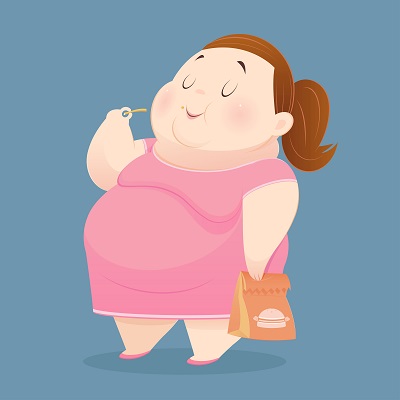 Body fat is known anatomically as adipose tissue. You would be hard pressed to find someone who actually enjoys the sight of this substance, especially if they have an abundance of it. However, although commonly maligned for being awfully bad, there is actually a good side to fat.
Body fat is known anatomically as adipose tissue. You would be hard pressed to find someone who actually enjoys the sight of this substance, especially if they have an abundance of it. However, although commonly maligned for being awfully bad, there is actually a good side to fat.
Think of it as any popular city across America. There’s a beautiful side and an ugly side. It is in your best interest to become well acquainted with both sides so you can act accordingly with your personal health and wellness.
Anatomy of Body Fat
The most common type of fat is the stuff you can visibly see. It can build up pretty much anywhere on the body, but for men it is most common in the stomach and sides, while for women it is most abundant in the thighs, hips and butt.
In medical terminology, the area around the stomach is called android, while the hip and thigh region is known as gynoid.
Women tend to have more body fat than men because of basic physiological differences, including, hormones, breasts, and sexual organs. Plus, women need more body fat as it plays a role in ovulation.
Subcutaneous Fat
Subcutaneous fat is found right under the skin. Aside from the fact that it can cause embarrassment and self-esteem issues, it’s relatively benign. But it does have some benefits. It can be used as shock absorption if you were to fall or bump into something and it also helps keep your body warm.
Visceral Fat
Deep fat found in the abdomen is much more serious. It is known as visceral fat. The word “viscera” is used in reference to the organs. When you get high amounts of fat buildup here, it packs its way around the organs and becomes dangerous. You are at greater risk for serious health conditions, such as diabetes, high blood pressure, atherosclerosis and stroke.
Why Some Fat is Necessary
Although it may sound like a good idea to melt away all of your fat, think again. You have to have at least some to function properly. If you were to get too low, a battery of issues can occur that are just as dangerous as having too much fat.
Fat helps promote healthy hormone function. If your hormones are out of balance, your sex drive will be blunted, you’ll get cold really easily, you could experience hair loss, you won’t be able to concentrate and you will likely have mood swings. In the worst of cases, your organs will just start shutting down with no warning, which can be fatal.
Ideal Body Fat Ranges
The Mayo Clinic makes the following recommendations:
Women:
20-40 years old:
- Underfat: under 21%
- Healthy: 21-33%
- Overweight: 33-39%
- Obese: 39% and over
41-60 years old:
- Underfat: under 23%
- Healthy: 23-35%
- Overweight: 35-40%
- Obese: 40% and over
61-79 years old:
- Underfat: under 24%
- Healthy: 36-42%
- Overweight: 36-42%
- Obese: 42% and over
Men:
20-40 years old:
- Underfat: under 8%
- Healthy: 8-19%
- Overweight: 19-25%
- Obese: 25% and over
41-60 years old:
- Underfat: under 11%
- Healthy: 11-22%
- Overweight: 22-27%
- Obese: 27% and over
61-79 years old:
- Underfat: underfat 13%
- Healthy: 13-25%
- Overweight: 25-30%
- Obese: 30% and over
Measuring Your Body Fat
One of the most accurate ways to check body fat levels is through the use of a Body Fat Caliper, which, is a tool that measures fat in the body through the folds of the skin. If you have a gym membership staff there typically have them on hand, or you can buy one of your own to test regularly.
You can also check where you place on the BMI index that provides details into healthy weight versus several obesity ranges.
Weight on a scale by itself is one of the least accurate ways to measure actual body fat because muscle weighs more than fat, and other factors can skew weight, like water retention.
Good Versus Bad Fat in Diet
The correct thing to do is keep your body fat under control by exercising and eating right.
When it comes to your diet specifically, not all fats are bad. Foods that are deep fried, pan fried or packaged are the ones you want to avoid. These would include cakes, cookies, burgers, fries, ribs, wings, creamed sauces and burritos.
Healthy fats are altogether different. They help lubricate the joints, improve brain function and promote healthy skin, among other things. Stick with sources that are as close to natural as possible like seeds, nuts, avocadoes, olives, olive oil, and coconut oil.
Remember though, that fat is calorie dense. A single gram contains 9 calories. Supplement it into your diet throughout the day to get the best effect. For example, mix a tablespoon of almond butter into your oatmeal in the morning, smear some avocado across the top of your turkey and cheese sandwich for lunch, and use coconut oil as a topper for steamed broccoli with dinner.
Bottom Line
As you can see, body fat is actually quite important for human function. Just like anything else, you never want to overdo it.
Find a happy balance where you do not have too little or too much fat and you’ll be fine.






